Even before I get to the end of a project, I sometimes sneak a little.
No, I don’t cast-on for another knitting crush although I must confess that’s my usual MO… ;p
Oh no, instead, I sometimes pull out the ironing board! (And those of you who have room enough to leave it out all the time, I salute YOU!)
Adding a little steam and pressure to a WIP can be one of those make or break moments. Done early enough, you see the real nature of the fabric you’re making, the bones and lines all in place, behaving as they should.
But if it isn’t too your liking, then it’s Off with It’s Threads! Life is just too short to be knitting something that isn’t behaving early on…
I pre-pressed my Mondo Cable Cardi a while back and yay, it received a thumbs up!
But now, that all that remains is the weaving in of the ends and buttons, and it’s time to Press for Real.
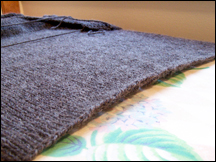
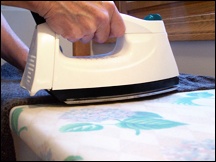
from l. to r.: Flipping edge; press hem.
We going to start with the bottom edge. This garment has a type of ribbing that controls the rolling but doesn’t constrict as much as normal ribbing. However, while the knitting is going on, it tends to flip up a bit and want to go north.
By applying a little heat to the edge, hovering ever so slightly above, the flip is flattened by blasting it with the steam from the iron. If your fiber can handle it, it’s OK to press this area just as if you were pressing a shirt, lightening up on the pressure and scrubbing motion you would normally apply on something as heat resistant as cotton.
A Light Hand is OK for this type of wool and is a favorite British finishing technique.

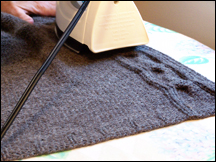
from l. to r.: Press body; open & press mondo cable.
After the hem is steamed, I press the body of the piece, again, with that “light hand”. Then I do the front edges and the mondo cable.
You can see my hand at the top slightly spreading out the puckering of the cable on the reverse side. The goal is to flatten it out just enough to retain the defintion of the cross but to have the cable lay flat and look fabulous.
Next time you see a cabled sweater in the wild on the rack in your favorite store, check out how flat the cables are on commercial sweaters. They are pressed.
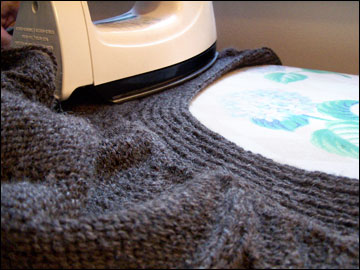
Pressing the neckline.
Now it’s time to do the neckline, and I pay special attention to where the neckband meets the neckline of the body of the garment, applying a little more steam (and pressure, if the fiber can take it) to this area. This flattens the join and really makes the neckband look professional. It also “sets” the stitches as there might be slight variations around the curve. This balances the arc.
Then, with all the pressing done, all that’s left is to weave in the ends (which I sometimes do before pressing but the Weaver Muse is out having coffee or something this morning and has abandoned me) and then sew on the buttons & snaps.
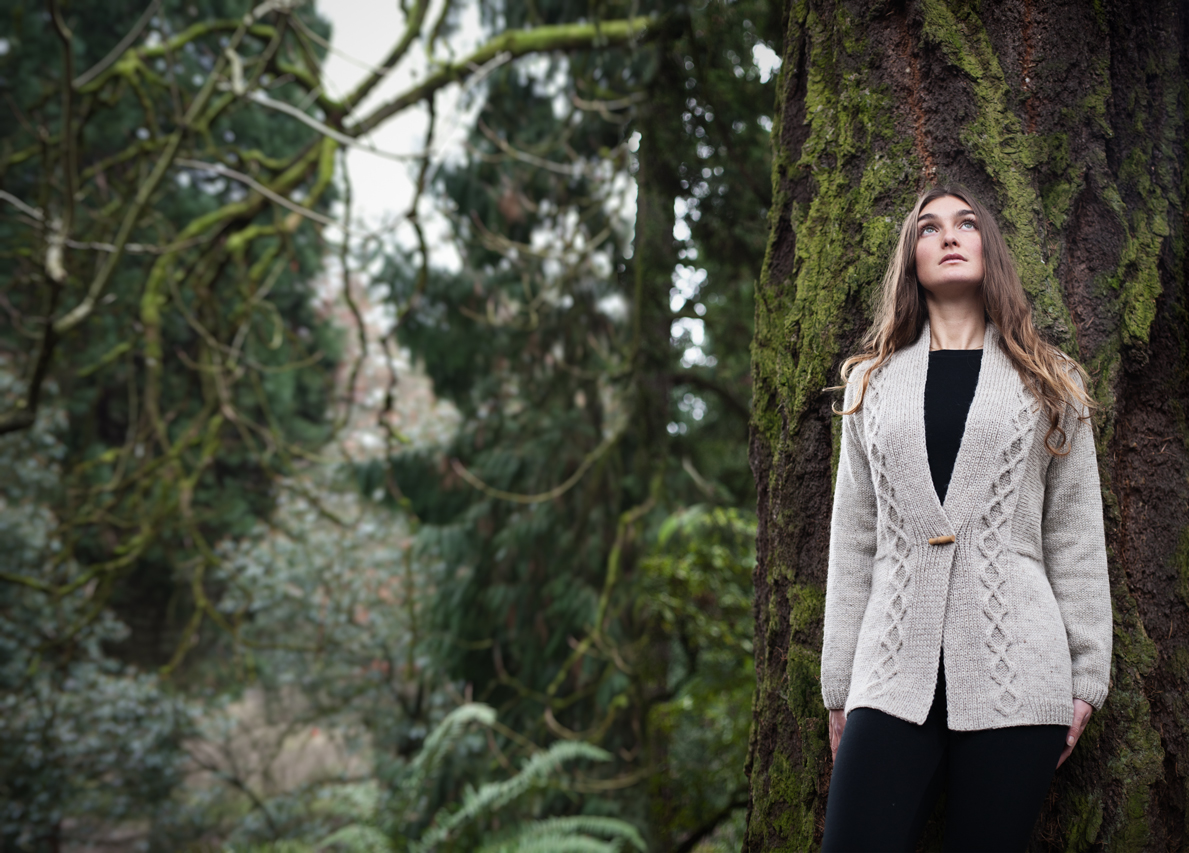

Thanks for posting these photos. Very helpful!
Yes, very helpful, thank you.
Great tutorial, thanks!
I love steaming and pressing stuff, must be the quilter side of me… lol
Interesting tutorial, very useful. That said I’m done with the body of my mondo pulli and I LOVE the way the cables look as is. I’m using Cotton Twist, old yarn that is all cotton, no rayon. I don’t want my sweater to look store-bought. I will steam the hem but wear it before blocking the cables, then reassess. It’s a great pattern!